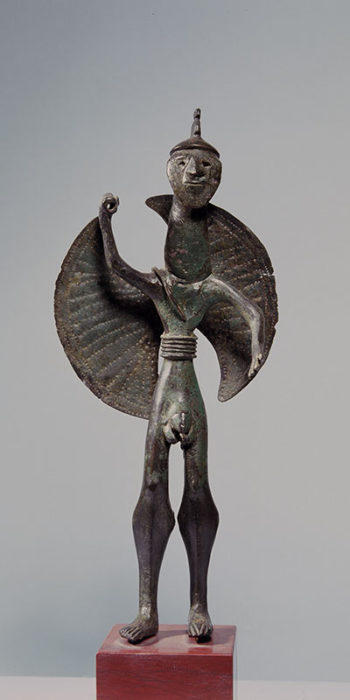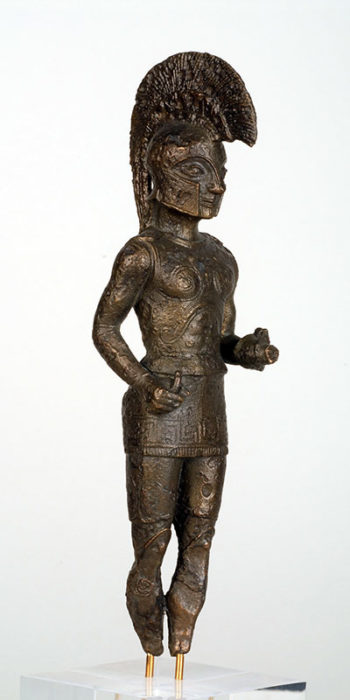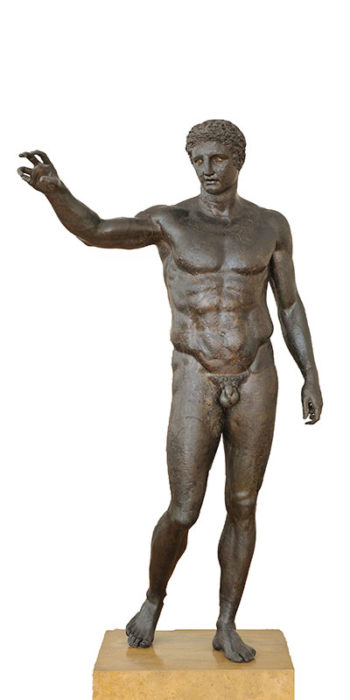Introduction to the Metalwork Collection
The Metalwork Collection of the National Archaeological Museum constitutes one of the richest and most significant collections of ancient metal artworks of the Greek civilization in the world. The Collection was established by the Royal Decree dated July 31st 1893 on the “Organization of the National Archaeological Museum” as “a Collection of clay and bronze statuettes and other antiquities made of various materials”. Nevertheless, the collection had already taken shape since 1858, a time at which the metal artworks formed part of the Archaeological Society at Athens that was housed in the University of Athens at the time.
Most of the artefacts that comprise the Collection were unearthed during systematic excavations conducted in the late 19th and the early 20th century in Greece by the Archaeological Society at Athens and the Foreign Archaeological Schools in Greece. Excavation brought to light Panhellenic sanctuaries and local places of worship, cemeteries and various installations associated with the public and private life and also a plethora of objects that attest to human activity at these sites.
Simultaneously, the Collection was enriched with remarkable works recovered from confiscations, donations, handovers and purchases, acts that even nowadays continue to take place, thereby increasing the number of acquisitions. A characteristic example is the donation of the antiquarian landowner and politician Konstantinos Karapanos (1840-1911) in 1902 that included a large number of artefacts coming mainly from the sanctuary of Zeus Naian at Dodona, and also the rich collection of medical tools owned by the doctor K. Lampros, which entered the Collection in 1899. The Royal Decree of 1910 contributed to the enrichment of the collection as it stipulated that those finds retrieved from excavations in Attica, together with the most important ones from the provinces, as well as the antiquities acquired through donations and purchases would form part of the collections of the National Archaeological Museum.
Today the Collection amounts to around 35.000 accessioned antiquities, monumental statues and works of minor arts made of bronze mainly and its alloys, iron and lead. Approximately 1.670 works are on display in Rooms 36-39 of the permanent exhibition of the Collection that occupies approximately 547.50 sq. m in floor area, while others decorate the galleries of the permanent exhibition of the Sculpture and the Vase Collection.
The large bronze statues that adorn the main galleries of the Museum, works of unparalleled artistic and archaeological value, include: Zeus or Poseidon of Artemision and the “Jockey of Artemision”, the Livadhostro Poseidon, the Marathon Boy, the Ephebe of Antikythera and the “Antikythera Philosopher” lifted from the same shipwreck, Augustus on horseback found in the sea off Lemnos, and the portrait statue of Iulia Aquilia Severa from the Acropolis of Sparta. Most of these sculptures formed part of the cargo carried by Roman vessels that were wrecked during the transport of priceless treasures from Greece to territories of the Roman Empire.
Two of the recent acquisitions of the Collection, the bronze statue of a young male figure, confiscated at Saarbrücken, Germany in 1998 and repatriated in 2002, and the bronze krater that was repatriated in 2008 from the USA (Shelby White and Leon Levy Collection) have been installed at the entrance to the permanent exhibition of the Collection.
The Collection of Metalwork highlights with its wealth all aspects of the ancient Greek culture and its impact on the then known world.




